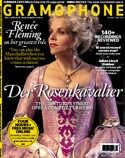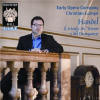Texte paru dans: / Appeared in:
*

GRAMOPHONE (05/2011)
Pour s'abonner /
Subscription information
Whigmore Hall Live
WHLIVE0042/2

Code-barres / Barcode:
5065000924447
Reviewer: David
Vickers
Plenty of verve and detail in this intimate account of Handel’s first Roman oratorio
Nothing is known about the occasion, venue and forces for Handel’s first Roman oratorio, Il trionfo del Tempo e del Disinganno (1707). Maybe the scale and opulence of the orchestra was similar to La Resurrezione (performed Easter 1708 by an orchestra of about 45 players), but we cannot dismiss the possibility that the earlier oratorio was a more intimate affair, such as was presented by the Early Opera Company at Wigmore Hall in January 2010. Recorded live with only a few tiny audible signs of being caught on the wing, Christian Curnyn’s impeccably stylish performance employs only a modest string band (3-2-1-1-1), a single bassoon, a simple team of continuo players (archlute, organ and Curnyn at the harpsichord) with a pair of oboists who double up on recorders when necessary (standard practice in the early 18th century).
Curnyn’s shapely handling of ritornellos often leans towards delicacy rather than vigour, and throughout the concert the string playing is immaculate: even the macabre ombra aspects of the fast string figures during the introduction to Tempo’s “Urne voi” are blended sweetly (Andrew Staples’s soft timbre does not convey the chilling horrors implied in Cardinal Pamphili’s libretto at this point but it is ideal for the gently persuasive “Nasce l’uomo ma nasce bambino”). Elsewhere, instrumental parts in rapid arias played quietly and delicately lack nothing in energy (eg Bellezza’s “Un pensiero nemico di pace”), and Curnyn’s interpretations tend to be subtler and less formulaic than those who might pursue the objectives of abrasive dramatic punchiness. Robust cut-and-thrust is lacking but only infrequently; perhaps moments such as Piacere’s exposal in the villainous “Come nembo che fugge col vento” possessed greater vigour in the flesh than the microphones have captured.
The singers deliver an engaging and fervent account of the moral conflict between the evil Piacere (Pleasure) and the virtuous guardians Tempo (Time) and Disinganno (Disenchantment) over the soul of Bellezza (Beauty), who wants to be a disciple of Pleasure but thankfully ends up on the side of the angels just in the nick of time to be saved. Mezzo Anna Stephany reins her voice in with admirable discipline and there is a nice atmosphere of chamber music-making between her vocal lines and solos by organist Mark Williams during Piacere’s “Un leggiadro giovinetto”. Hilary Summers sounds uncomfortable in Disinganno’s “Più non cura” but sings “Crede l’uom” compassionately; the aria’s recorder-laden pastoral shades are judged to perfection by Curnyn (whose own harpsichord continuo realisation is discreet and delightful). Lucy Crowe’s animated coloratura is executed with precision and refinement, her embellishments strike the ideal balance between unpredictability and fitting the harmony naturally, and Bellezza’s slower sentimental music is captivating.
Cliquez l'un ou l'autre
bouton pour découvrir bien d'autres critiques de CD
Click either button for many other reviews


